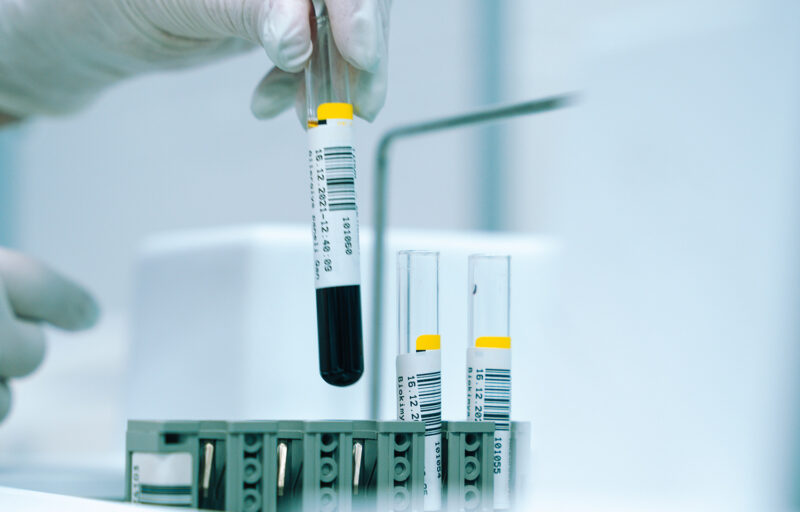blog:
Dealing with digital: The power of PPC

Across all industries, new business acquisition is becoming more “digital first” than ever as people spend more time online.
Whilst digital marketing presents a host of opportunities, it is also hyper-competitive as companies seek out high-impact, low-cost ways to get in front of their target audiences.
This is where – for many of our clients in the life science and pharma industry – PPC (Pay-Per-Click) advertising really delivers. It’s a savvy form of online advertising that offers a fast, targeted and highly measurable way to boost your online presence and lead generation efforts.
So, what makes PPC advertising such a powerful component of your digital marketing strategy? Let’s start with the basics.
What is PPC advertising?
PPC stands for Pay-Per-Click. This is the essence of how paid ads work; you pay the advertising platform every time someone clicks on your ad, with the cost per click dependent on the ‘bid’ you set.
Think of it as a global auction. To win advertising space, advertisers must ‘bid’ on a search term/keyword or target audience group they would like their ad to appear for. The ads with the most competitive bids and relevant offerings will then be shown. This means that when someone Googles that keyword or falls into that target audience, they could see your ad and click through to your website.
Where do PPC ads appear?
The most common paid advertising platforms are Google Ads and Microsoft Ads. If you choose Google Ads, the reach opportunities are almost endless! Although it does depend on the ad format:
Google Search ads – these text ads rely on keyword bidding and appear mostly at the top of Google search results. As the world’s most popular search engine, Google boasts over 86% of the global market share.
Google Display ads – these are dynamic image ads that rely on target audience bidding and appear across Google’s Display Network; a network of over two million websites, including YouTube and Gmail.
Why PPC is important
Now that I have given you a quick introduction to how Google PPC ads work, we can take a closer look at how they can enhance your current digital marketing efforts and deliver that all-important return on investment (ROI).
1) PPC aligns with your website goals
Whether you want to increase brand awareness, e-commerce sales, leads or content downloads via your website, PPC can help you reach those goals. PPC campaigns are highly customisable; the ads, targeting and bids can be tweaked and changed to align with any stage of the sales funnel (which is perfect for the pharma and biotech space). This is especially true for Google Ads, which use advanced machine learning to optimise ad delivery based on goals.
With a small snippet of code, website downloads, contact form submissions, basket views and more can be tracked as ‘conversions’ to help measure the success of your campaigns.
Search PPC ads increase brand awareness by as much as 80% (Google, 2014)
2) It’s highly measurable
Advertising is often seen as a bit of a rogue practice, where money is thrown at projecting a message with no guaranteed results. However, with PPC advertising, this couldn’t be further from the truth.
From the day your PPC campaign goes live, there is a wealth of metrics and measurable data to view and report on in the campaign interface. Ad clicks, average cost-per-click, conversion rate and cost per conversion are just some of the valuable data sets at your fingertips.
This is hugely beneficial to businesses with specific advertising KPIs in mind or managers who want to measure clear ROI (which is typical for marketing teams in our industry).
PPC advert traffic generates 50% more conversions than Organic listings (Moz)
3) Take control of your audience
Every business has an ideal customer or client in mind, or even a few, depending on the stage in the sales funnel. Paid advertising platforms such as Google Ads allow you to hone in on these potential customers via campaign settings.
For example, if you’re bidding on the keyword “CMDO” or “clinical packaging”, the audience of your ad can be narrowed further by demographics, location and interests.
To help lead nurturing efforts further down the funnel, PPC ads can even target people who have visited your website before – this is called remarketing.
4) Instant results
Possibly one of the most compelling reasons why businesses start – and continue with – paid advertising is because it delivers results instantly.
Keyword bids, daily and monthly budgets can be updated any time and have an immediate effect. This takes us back to the ‘global auction’ analogy; a new bid will directly affect the likelihood of winning ad space.
Want to switch up your campaign messaging? Ad copy and audience targeting can be edited and pushed live at a click of the ‘save’ button. Have your advertising tactics changed completely? Old campaigns can be paused in a second to make way for new ones.
Companies spent $106.5 billion on search advertising globally in 2019 (Statista, 2019)
5) Gain a competitive edge
Another key reason why businesses should make time for PPC is the competitive advantages it brings.
Chances are that your website isn’t ranking organically on the first page of Google for every product or service you offer. SEO takes time. To increase visibility, Google Search ads allow text-based ads to rank above the Organic search results (including your competitors) instantly, for the keywords that are most valuable to your business.
People who click on PPC ads convert at a 1.5 times higher rate than their Organic counterparts (Atomic Reach, 2019)
If you know your target audience well, Google Display ads can also help place your brand name in front of potential customers at key decision-making stages. These image-based ads can appear across the internet to people who visit certain websites or have specific browsing interests.
PPC is one of the highest lead generators for companies working within the pharma and biotech industry.
If you know how to target the right audiences and use creative copywriting skills to capture interest from the right people, it’s a great tool to directly influence the bottom of the funnel and enable your marketing efforts to work harder.
Related news, insight and opinion




